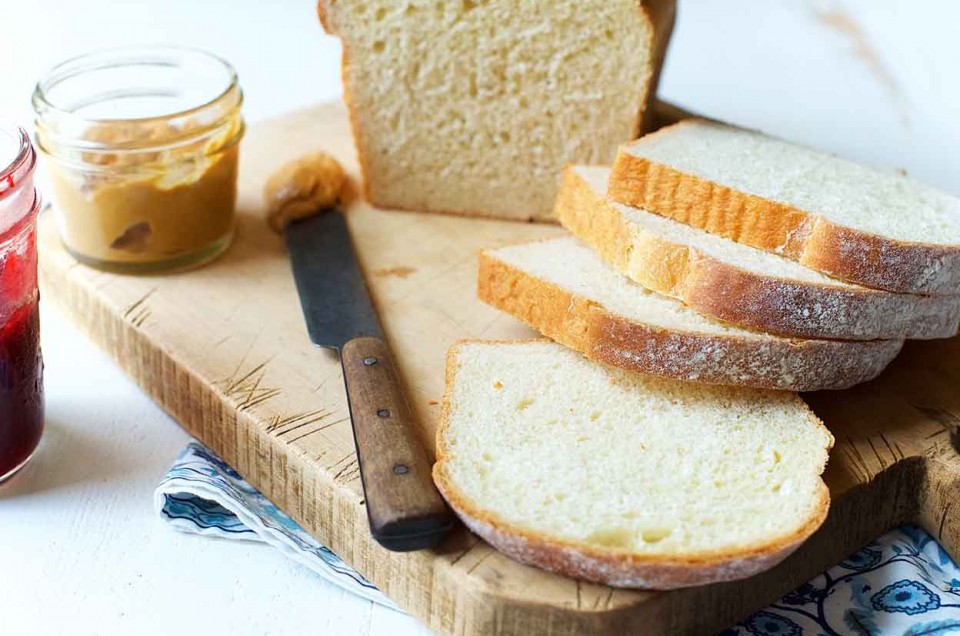Our Favorite Sandwich Bread
For sandwiches, toast, and French toast, you just can't beat a classic American sandwich loaf, with its creamy-white interior, golden crust, and soft, easily slice-able texture.

For sandwiches, toast, and French toast, you just can't beat a classic American sandwich loaf, with its creamy-white interior, golden crust, and soft, easily slice-able texture.

Heat the milk to a simmer, and pour it over the butter in a large mixing bowl. Let the mixture cool to lukewarm, then add the yeast and sugar.
Weigh your flour; or measure it by gently spooning it into a cup, then sweeping off any excess.
Once the yeast softens, add the remaining ingredients and stir until the dough starts to leave the sides of the bowl.
Transfer the dough to a lightly greased surface, oil your hands, and knead it for 6 to 8 minutes, or until it begins to become smooth and supple. (You may also knead this dough in an electric mixer or food processor, or in a bread machine set to the dough or manual cycle). Add a bit of additional milk or flour if needed — the dough should be soft, but not sticky.
Transfer the dough to a lightly greased bowl, cover, and allow it to rise until puffy though not necessarily doubled in bulk, about 1 hour.
Transfer the dough to a lightly oiled work surface, and shape it into an 8" log. Place the log in a lightly greased 8 1/2" x 4 1/2" loaf pan, cover loosely with lightly greased plastic wrap, and allow the bread to rise for about 60 minutes, until it's domed about 1" above the edge of the pan. A finger pressed into the dough should leave a mark that rebounds slowly.
Towards the end of the rising time, preheat the oven to 350°F.
Bake the bread for 30 to 35 minutes, until it's light golden brown. Test it by removing it from the pan and thumping it on the bottom (it should sound hollow), or by measuring its interior temperature with a digital thermometer (it should register 190°F at the center of the loaf).
Remove the bread from the oven, and cool it on rack before slicing.
Store the bread in a plastic bag at room temperature for several days; freeze for longer storage.
For added whole-grain goodness, substitute King Arthur whole wheat flour (Premium or white whole wheat) for up to half of the all-purpose flour in this recipe. Add an additional 1 to 2 tablespoons milk, if needed, to make a smooth and supple dough as described in step 4.
Popular in recipes
Popular in products

